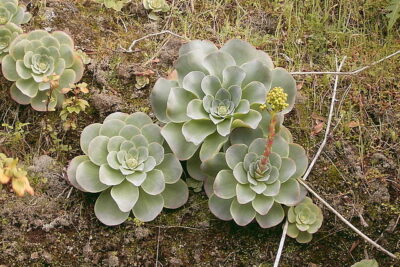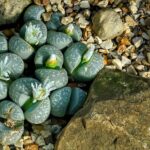
Succulents: Indoor or Outdoor Plants?

Succulents have become increasingly popular in recent years, with their unique and striking appearance making them a favorite choice for plant enthusiasts. Their ability to thrive in various conditions and their low maintenance requirements make them a great choice for both indoor and outdoor gardens. However, many people wonder whether succulents are better suited for indoor or outdoor environments.
We will explore the advantages and disadvantages of keeping succulents indoors versus outdoors. We will discuss the specific requirements of succulents and how these can be met in both settings. Additionally, we will provide tips and recommendations for successfully growing and caring for succulents, whether you choose to keep them inside your home or in your outdoor garden. By the end of this article, you will have a better understanding of which option may be best for you and your succulent plants.
- Succulents can be grown both indoors and outdoors
- Indoor succulents are best suited for areas with bright, indirect sunlight
- Outdoor succulents thrive in full sunlight and well-draining soil
- If growing succulents indoors, place them near a south-facing window
- Outdoor succulents can be planted in containers or directly in the ground
- Indoor succulents benefit from occasional trips outdoors to get some fresh air and sunlight
- Outdoor succulents may need to be protected during extreme weather conditions
- Both indoor and outdoor succulents require minimal watering and low maintenance
- Consider the climate and environment of your location when deciding between indoor or outdoor succulents
- Frequently Asked Questions
Succulents can be grown both indoors and outdoors
When it comes to succulents, one of the most common questions that plant enthusiasts ask is whether they should be grown indoors or outdoors. The good news is that succulents can thrive in both environments, as long as their specific needs are met.
Indoor Succulents
Growing succulents indoors is a popular choice for many plant lovers. These plants are well-suited for indoor environments because they can tolerate lower light levels and are generally easy to care for. Whether you live in a small apartment or have limited outdoor space, indoor succulents can bring a touch of greenery to any room.
When growing succulents indoors, it's important to place them in a location that receives bright, indirect sunlight. A south-facing window is usually the best choice. If you don't have access to ample natural light, you can supplement it with artificial grow lights.
Another advantage of growing succulents indoors is that you have more control over their environment. You can adjust the temperature, humidity, and watering schedule to ensure optimal conditions for your plants. However, it's essential to avoid overwatering, as succulents are prone to root rot.
 Growing Trunked Succulents Indoors: A Guide
Growing Trunked Succulents Indoors: A GuideThere are countless indoor succulent varieties to choose from, ranging from the popular Echeveria and Aloe to the unique String of Pearls and Haworthia. You can create stunning arrangements by combining different species and colors in decorative pots or terrariums.
Outdoor Succulents
If you have a garden, patio, or balcony, growing succulents outdoors can be a fantastic option. These plants are known for their ability to thrive in arid conditions, making them perfect for dry and sunny outdoor spaces.
When choosing outdoor succulents, it's crucial to consider your climate and the specific needs of the plants you intend to grow. Some succulents are more cold-hardy and can tolerate frost, while others prefer warmer temperatures. Research the ideal conditions for each species and select accordingly.
Outdoor succulents generally require more sunlight compared to their indoor counterparts. They should be placed in a spot that receives at least six hours of direct sunlight per day. Additionally, succulents grown outdoors benefit from well-draining soil to prevent standing water and potential root rot.
One advantage of growing succulents outdoors is that they have more space to spread and grow. They can develop into stunning and eye-catching focal points in your garden, creating a beautiful and low-maintenance landscape.
Some popular outdoor succulents include the iconic Agave, Sedum, and Sempervivum. These plants come in various shapes, sizes, and colors, allowing you to create a diverse succulent garden.
Whether you choose to grow succulents indoors or outdoors, these resilient plants will bring beauty and charm to any space. Assess your available light, temperature, and space, and select the succulents that best suit your environment. With proper care and attention, your succulents will thrive and become a delightful addition to your home or garden.
 Choosing Low-Light Succulents: A Guide to Thriving Indoors
Choosing Low-Light Succulents: A Guide to Thriving IndoorsIndoor succulents are best suited for areas with bright, indirect sunlight
When it comes to succulents, many people wonder whether they are best suited for indoor or outdoor environments. While succulents can thrive both indoors and outdoors, it is important to consider their specific needs in order to ensure their optimal growth and health.
Indoor succulents are best suited for areas with bright, indirect sunlight. They require at least 6 hours of sunlight per day, but direct sunlight can be too intense and may cause sunburn or damage to their delicate leaves. Placing your indoor succulents near a window that receives filtered sunlight or using sheer curtains can provide the right amount of light they need.
It is also important to note that indoor succulents typically require less water compared to their outdoor counterparts. Their thick, fleshy leaves and stems store water, allowing them to withstand periods of drought. Overwatering indoor succulents can lead to root rot and other issues, so it is crucial to allow the soil to dry out between waterings.
When choosing an indoor succulent, it is recommended to opt for varieties that are known to tolerate lower light conditions. Some popular choices include the Echeveria, Haworthia, and Sansevieria species. These succulents have adapted to survive in environments with less sunlight and can thrive indoors with proper care.
Lastly, indoor succulents can be a great addition to your home decor. With their unique shapes, colors, and textures, they can add a touch of natural beauty to any room. Whether displayed in a terrarium, on a windowsill, or as part of a larger succulent arrangement, indoor succulents can be a stunning focal point in your home.
Overall, indoor succulents can be a rewarding choice for plant enthusiasts who want to bring the beauty of these resilient plants into their living spaces. With the right amount of light, water, and care, these indoor beauties can thrive and flourish, adding a touch of nature and serenity to your home.
 Growing Aloe Vera Indoors: Tips for Cultivating Succulent Houseplants
Growing Aloe Vera Indoors: Tips for Cultivating Succulent HouseplantsOutdoor succulents thrive in full sunlight and well-draining soil
Outdoor succulents are known for their ability to thrive in full sunlight and well-draining soil. These plants have adapted to survive in arid environments by storing water in their leaves, stems, and roots. They are excellent choices for gardeners who want low-maintenance plants that can withstand dry and hot conditions.
When choosing outdoor succulents, it's important to consider the climate of your region. Succulents generally prefer warm and dry climates, as they are native to desert and semi-desert regions. However, there are also succulents that can tolerate colder temperatures, making them suitable for various climates.
One crucial factor for the success of outdoor succulents is sunlight. These plants need at least six hours of direct sunlight each day to thrive. Placing them in a spot where they can receive ample sunlight is crucial for their growth and health.
Another essential consideration is the soil. Outdoor succulents require well-draining soil to prevent root rot and other water-related issues. Sandy or gritty soil is ideal for these plants as it allows excess water to drain quickly, preventing waterlogged conditions that can harm the roots.
When planting outdoor succulents, it's recommended to incorporate organic matter into the soil to improve its drainage and fertility. Mixing in materials like coarse sand, perlite, or pumice can also help create a well-draining environment for the roots.
It's worth noting that outdoor succulents are generally more forgiving when it comes to watering. These plants have adapted to survive long periods without water and can tolerate drought conditions. They are designed to store water in their leaves, enabling them to withstand dry spells.
However, it's crucial not to overwater outdoor succulents. Overwatering can lead to root rot and other fungal diseases. It's best to allow the soil to dry out completely between waterings. Checking the moisture level of the soil before watering is a good practice to ensure you're not providing excessive moisture.
 Can You Successfully Grow Lotus Lithops Succulents Indoors?
Can You Successfully Grow Lotus Lithops Succulents Indoors?Overall, outdoor succulents are excellent choices for gardeners looking to add low-maintenance and drought-tolerant plants to their outdoor spaces. With the right amount of sunlight, well-draining soil, and minimal watering, these plants can thrive and add beauty to your garden or landscape.
If growing succulents indoors, place them near a south-facing window
When it comes to growing succulents indoors, one of the most important factors to consider is the amount of sunlight they receive. Succulents thrive in bright, indirect sunlight, so it is essential to place them near a south-facing window. This will ensure that they receive the maximum amount of sunlight throughout the day.
It is important to note that while succulents can tolerate direct sunlight, too much exposure can cause their leaves to burn. Therefore, placing them near a window with a sheer curtain or blinds can help filter the light and prevent any damage.
Choosing the right pot and soil for indoor succulents
Another crucial aspect of growing succulents indoors is selecting the right pot and soil. Succulents prefer well-draining soil to prevent root rot. Therefore, it is advisable to use a pot with drainage holes to ensure excess water can escape.
When it comes to choosing soil for your indoor succulents, opt for a sandy, well-draining mix. You can either purchase a pre-made succulent mix or create your own by combining regular potting soil with sand or perlite. This will provide the ideal conditions for your succulents to thrive.
Watering indoor succulents: Less is more
One of the most common mistakes when it comes to growing succulents indoors is overwatering. Succulents are adapted to arid climates and have the ability to store water in their leaves and stems. Therefore, they require far less water compared to other houseplants.
To ensure the health of your indoor succulents, it is crucial to follow the "less is more" approach when it comes to watering. Allow the soil to dry out completely between waterings and only water when the top inch of soil feels dry to the touch. This will prevent root rot and keep your succulents happy and healthy.
 Can You Keep Succulents Indoors Year-Round?
Can You Keep Succulents Indoors Year-Round?Fertilizing indoor succulents: Keep it minimal
Fertilizing indoor succulents should be done sparingly. While succulents do benefit from occasional feeding, it is important not to overdo it. Too much fertilizer can lead to excessive growth, which can make the plants leggy and less compact.
During the growing season, which typically spans from spring to early fall, you can fertilize your indoor succulents once a month using a balanced, water-soluble fertilizer diluted to half the recommended strength. However, during the dormant season, it is best to withhold fertilizing altogether.
By following these guidelines for growing succulents indoors, you can create a beautiful and thriving succulent collection that will brighten up your home all year round.
Outdoor succulents can be planted in containers or directly in the ground
When it comes to succulents, one of the first decisions you need to make is whether you want to keep them indoors or plant them outside. While succulents are known for their ability to thrive in various environments, there are some factors to consider when deciding whether to grow them indoors or outdoors.
If you have a garden or outdoor space, planting succulents outside can add a touch of natural beauty to your surroundings. One of the advantages of growing succulents outdoors is that they have more space to grow and can reach their full potential. They can be planted in containers, allowing you to create stunning arrangements or placed directly in the ground, adding an element of landscape design to your outdoor area.
When planting succulents outdoors, it is essential to choose the right location. Most succulents prefer bright, indirect sunlight but can also tolerate some shade. Ensure that the area you choose receives adequate light for optimal growth. Additionally, make sure the soil has good drainage as succulents are prone to root rot if they sit in waterlogged soil for too long.
Outdoor succulents are also more exposed to the elements, such as rain and temperature fluctuations. While they are generally hardy plants, it is crucial to select succulent varieties that are suitable for your climate. Some succulents are more cold-tolerant, while others thrive in warmer environments. Research the specific needs of the succulents you want to plant to ensure they can withstand the conditions in your area.
 Indoor vs Outdoor: Ideal Growing Environments for Succulents
Indoor vs Outdoor: Ideal Growing Environments for SucculentsAnother advantage of growing succulents outdoors is the potential for them to propagate naturally. Many succulents produce offsets or "pups" that can be separated from the parent plant and replanted elsewhere, allowing your succulent collection to grow over time.
Overall, if you have the space and suitable outdoor conditions, growing succulents outside can be a rewarding experience. Not only can you enjoy their unique beauty in a natural setting, but you can also witness their resilience and growth in an environment that mimics their native habitats.
Indoor succulents benefit from occasional trips outdoors to get some fresh air and sunlight
When it comes to succulents, many people wonder whether they should be kept indoors or if they can thrive outdoors. The truth is, succulents can be grown both indoors and outdoors, but each option comes with its own set of considerations.
Benefits of Indoor Succulents
Keeping succulents indoors can have its advantages. One of the main benefits is that you have more control over their environment. Succulents require plenty of sunlight, so placing them near a sunny window can ensure they receive adequate light. Additionally, indoor succulents are protected from extreme weather conditions, such as frost or scorching heat.
Indoor succulents also benefit from occasional trips outdoors to get some fresh air and sunlight. You can take them outside for a couple of hours or even a day, as long as they are not exposed to direct sunlight for prolonged periods, which can lead to sunburn. This exposure to natural light can help stimulate growth and enhance their colors.
Considerations for Outdoor Succulents
Growing succulents outdoors can be a great option if you have the right conditions. These plants thrive in well-draining soil and require at least six hours of direct sunlight each day. If you live in a region with a mild climate or have a suitable outdoor space, such as a garden or balcony, you can create a succulent oasis.
Outdoor succulents have the advantage of natural sunlight, which can result in more vibrant colors and robust growth. They also have a larger space to spread their roots, allowing them to reach their full potential. However, it's important to protect them from extreme weather conditions, such as heavy rain or frost, which can damage their delicate leaves and roots.
 Optimal Indoor Lighting for Succulents: Sunlight or Not?
Optimal Indoor Lighting for Succulents: Sunlight or Not?Whether you choose to keep your succulents indoors or outdoors, it's essential to provide them with the right conditions. Indoor succulents should be placed near a sunny window and occasionally exposed to outdoor sunlight. Outdoor succulents require well-draining soil, ample sunlight, and protection from extreme weather conditions. By understanding these considerations, you can create a thriving environment for your succulents, no matter where you choose to grow them.
Outdoor succulents may need to be protected during extreme weather conditions
When it comes to succulents, many people wonder whether they are better suited for indoor or outdoor environments. While succulents are known for their ability to thrive in arid conditions, they can actually be grown both indoors and outdoors, depending on the specific needs of the plant and the climate in which you live.
Outdoor Succulents
Outdoor succulents can make a stunning addition to any garden or landscape. Their unique shapes, colors, and textures can create an eye-catching focal point or be used to fill in gaps in a garden bed. However, it's important to note that not all succulents are suitable for outdoor cultivation.
Climate Considerations
Before deciding to grow succulents outdoors, it's crucial to consider the climate in your area. Succulents generally prefer warm, dry climates with plenty of sunlight. They can tolerate temperatures as low as 40 degrees Fahrenheit (4 degrees Celsius) but may struggle in freezing temperatures.
Extreme weather conditions, such as heavy rainfall, snow, or frost, can be detrimental to outdoor succulents. Excessive moisture can cause root rot and other diseases, so it's crucial to ensure adequate drainage for your plants. Additionally, strong winds can damage the delicate leaves and stems of succulents.
 Can Succulents Thrive Indoors Without Sunlight?
Can Succulents Thrive Indoors Without Sunlight?Protection
If you live in an area with harsh winters or frequent storms, you may need to provide some protection for your outdoor succulents. This can be done by covering them with a frost cloth or moving them to a more sheltered location, such as a covered patio or greenhouse. By taking these precautions, you can help ensure the survival and health of your outdoor succulents.
Planting Tips
When planting succulents outdoors, it's important to choose a well-draining soil mix specifically formulated for succulents. This will prevent water from pooling around the roots and causing rot. Additionally, ensure that your outdoor succulents receive adequate sunlight – at least six hours of direct sunlight per day is ideal.
Outdoor Succulent Varieties
There are numerous outdoor succulent varieties to choose from, each with its own unique characteristics and care requirements. Some popular outdoor succulents include Sedum, Agave, Echeveria, and Sempervivum. These plants come in a range of sizes, colors, and shapes, allowing you to create a diverse and visually appealing outdoor succulent garden.
Both indoor and outdoor succulents require minimal watering and low maintenance
Succulents are a popular choice for both indoor and outdoor gardening due to their unique appearance and minimal care requirements. Whether you have limited space indoors or a spacious garden outdoors, succulents can thrive in various settings.
 Can Succulents Flourish with Grow Lights?
Can Succulents Flourish with Grow Lights?Indoor Succulents
Indoor succulents are ideal for those who want to bring a touch of nature into their living spaces. These plants are well-suited for apartments, offices, or any area with limited natural light. With their ability to adapt to low light conditions, they can survive in corners or on windowsills that receive indirect sunlight.
When growing succulents indoors, it is important to provide well-draining soil to prevent root rot. Use a pot with drainage holes and a gritty mix that allows excess water to escape. Overwatering is the most common mistake people make when caring for indoor succulents. These plants store water in their leaves, stems, or roots, so they are more susceptible to rot in excessively moist conditions.
Indoor succulents come in a variety of shapes, sizes, and colors, making them versatile for decorating. From the popular Echeveria and Aloe vera to the less common Haworthia and Gasteria, there is a succulent to suit every indoor space.
Outdoor Succulents
If you have a sunny garden or a balcony with ample sunlight, outdoor succulents can create an eye-catching display. These plants thrive in bright, direct sunlight and can withstand higher temperature fluctuations compared to indoor succulents.
When planting succulents outdoors, it is crucial to choose the right location. Ensure the area receives at least six hours of sunlight daily and has well-draining soil. Succulents are tolerant of poor soil conditions, but they require good drainage to prevent root rot.
Outdoor succulents are perfect for creating rock gardens, xeriscapes, or adding texture to flower beds. They can be planted directly into the ground or in containers, allowing for easy rearrangement and mobility.
Whether you opt for indoor or outdoor succulents, these plants are sure to add a touch of beauty and tranquility to any space. Their unique shapes and colors, coupled with their low maintenance requirements, make succulents a popular choice for both novice and experienced gardeners alike. So, go ahead and bring some greenery into your home or garden with these delightful plants!
 Can Mother of Thousands Succulents Thrive Indoors?
Can Mother of Thousands Succulents Thrive Indoors?Consider the climate and environment of your location when deciding between indoor or outdoor succulents
When it comes to choosing whether to grow succulents indoors or outdoors, one of the most important factors to consider is the climate and environment of your location.
Succulents are known for their ability to thrive in dry and arid conditions. They have adapted to survive in environments with minimal water availability, making them an ideal choice for outdoor gardens in regions with hot and arid climates.
If you live in a place where the summers are scorching and the winters are mild, planting your succulents outdoors can be a great option. The abundance of sunlight and the natural airflow will provide the perfect conditions for these plants to flourish.
However, if you reside in an area with harsh winters or extreme temperature fluctuations, it might be better to grow your succulents indoors. Indoor environments allow you to control factors such as temperature, humidity, and light intensity, ensuring that your succulents receive the optimal conditions for growth.
Another advantage of growing succulents indoors is that it protects them from potential pests and diseases that might be present in outdoor gardens. Indoor environments are generally more controlled and offer a safer haven for your succulents to thrive.
Factors to Consider for Outdoor Succulents:
- Sunlight: Succulents require at least 6 hours of direct sunlight per day. Choose a spot in your garden that receives ample sunlight.
- Drainage: Ensure that the soil in your outdoor garden is well-draining to prevent waterlogged roots, which can lead to root rot.
- Climate: Consider the average temperature and rainfall patterns in your region. Succulents are more likely to thrive in areas with low humidity and minimal rainfall.
Factors to Consider for Indoor Succulents:
- Light: Place your indoor succulents near a window that receives bright, indirect sunlight. Supplemental grow lights can also be used to provide adequate light.
- Temperature: Most succulents prefer temperatures between 60-80°F (15-27°C). Avoid placing them in drafty areas or near heating/cooling vents.
- Humidity: Succulents thrive in low-humidity environments. Avoid placing them in areas with high humidity, such as bathrooms.
- Potting Mix: Use a well-draining potting mix specifically formulated for succulents to prevent waterlogged roots.
The decision to grow succulents indoors or outdoors depends on various factors such as climate, environment, and personal preference. Both options have their advantages and considerations, so choose the option that best suits your location and provides the optimal conditions for your succulents to thrive.
Frequently Asked Questions
1. Can succulents be kept indoors?
Yes, succulents can be kept indoors as long as they receive adequate sunlight and proper care.
2. Are succulents suitable for outdoor gardens?
Absolutely! Succulents are well-suited for outdoor gardens, as they can thrive in various climates and soil conditions.
3. How often should indoor succulents be watered?
Indoor succulents usually require watering every 1-2 weeks, allowing the soil to dry out completely between waterings.
4. What are the benefits of keeping succulents indoors?
Indoor succulents can purify the air, add a touch of greenery to your space, and provide a calming effect.
If you want to read more articles similar to Succulents: Indoor or Outdoor Plants?, you can visit the Indoor and Outdoor Care category.






You Must Read